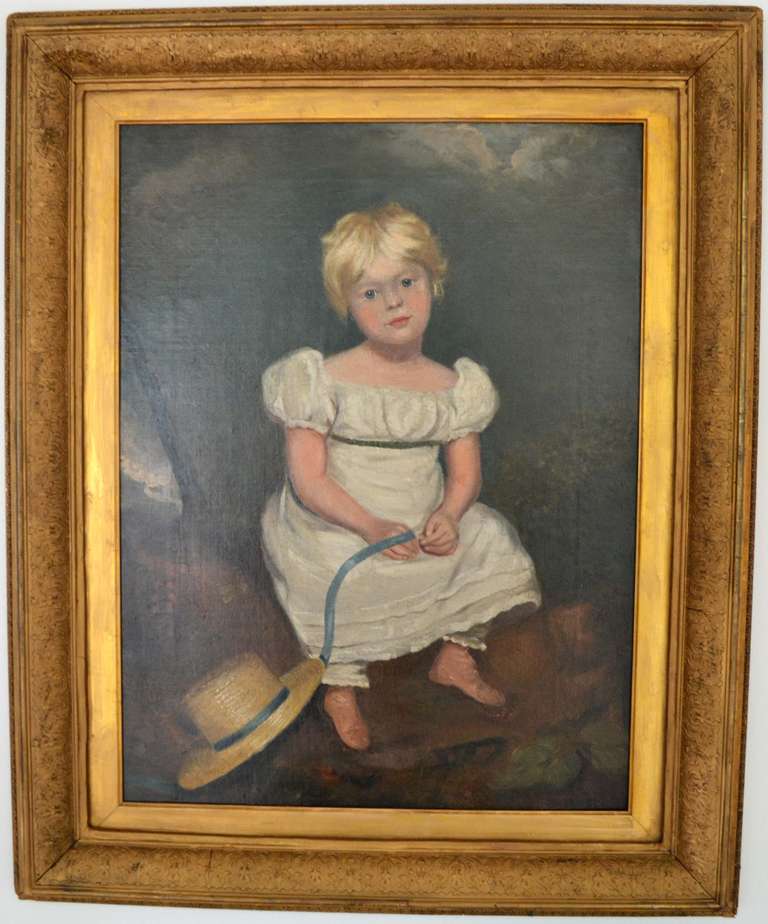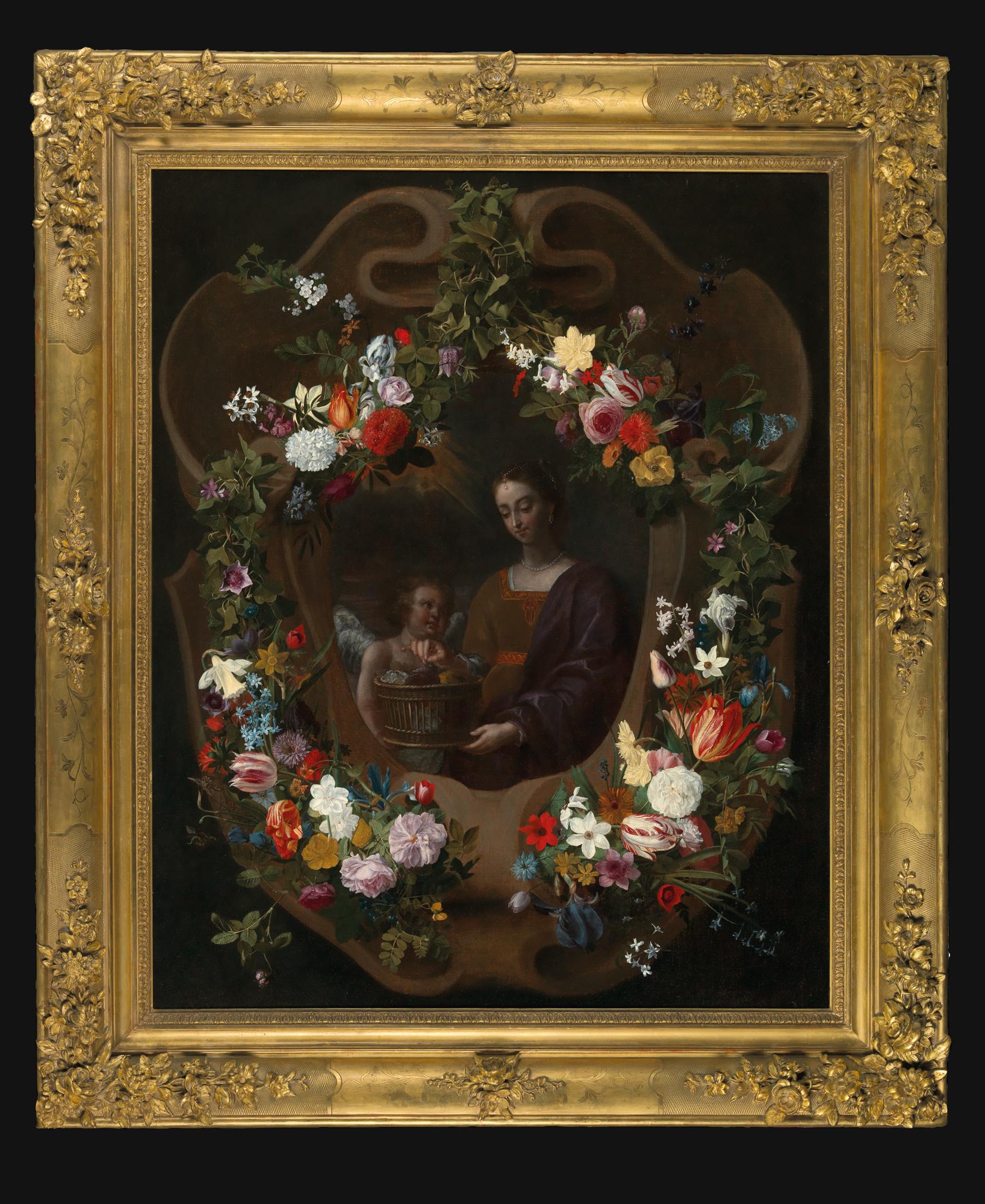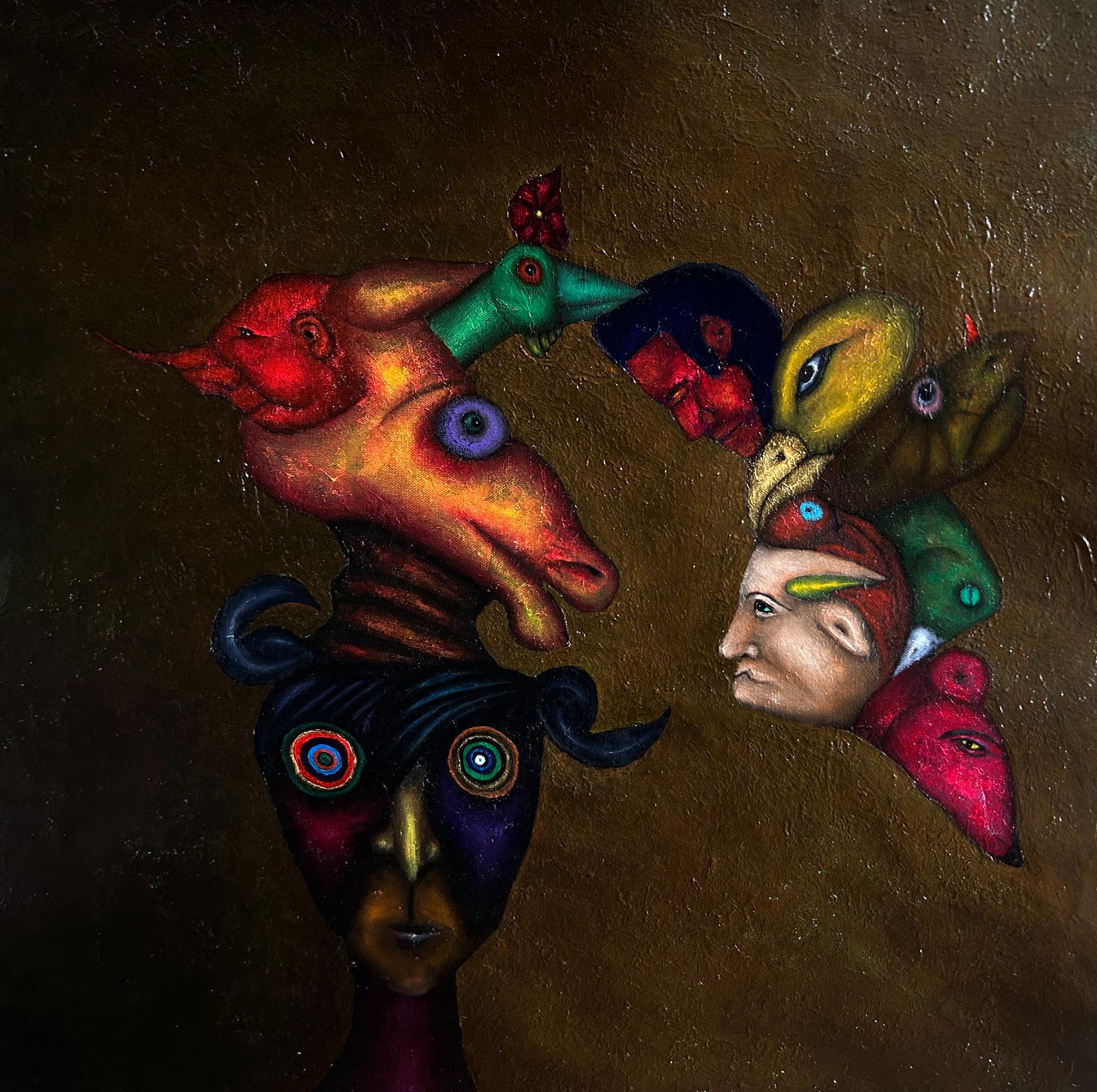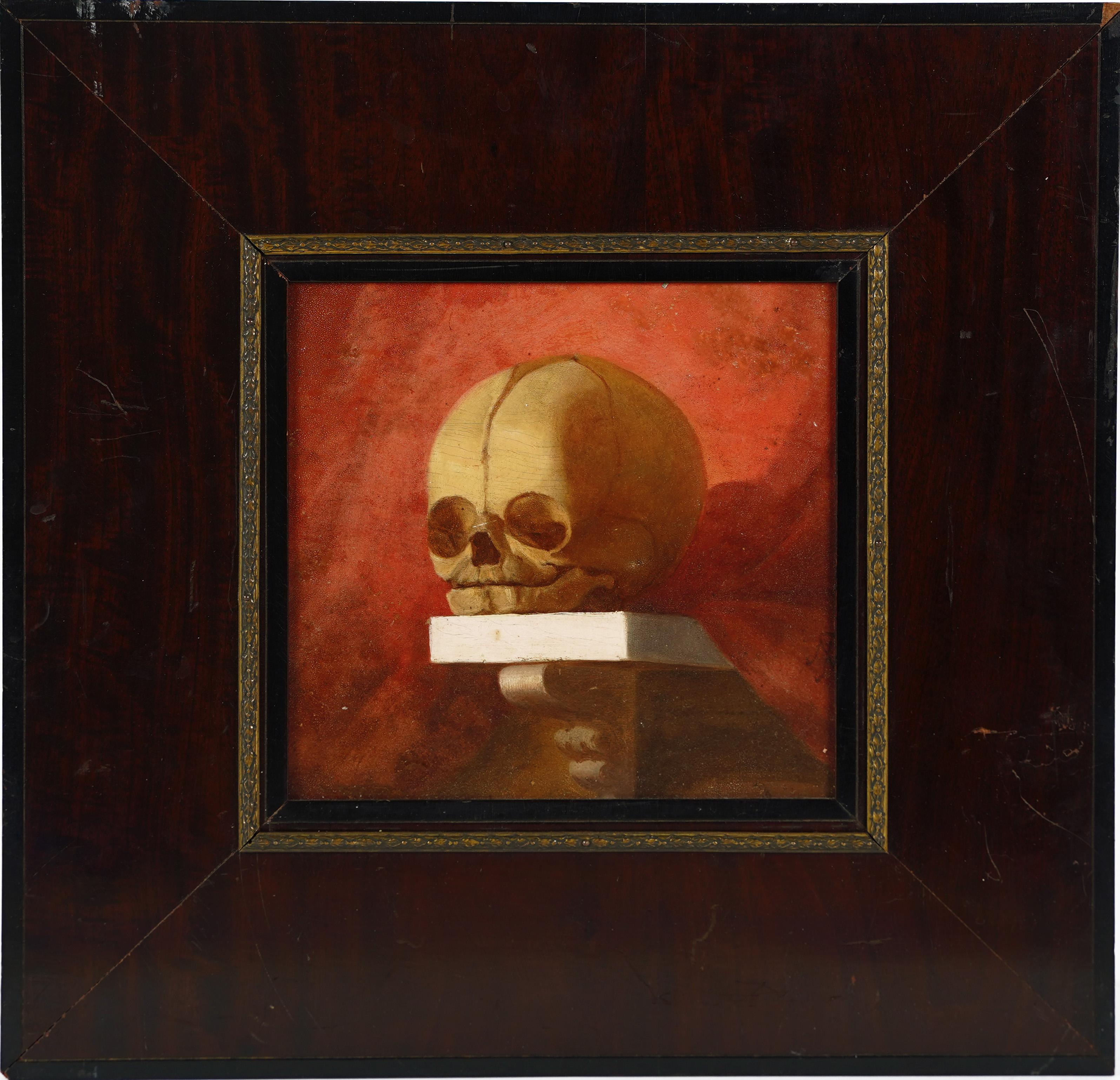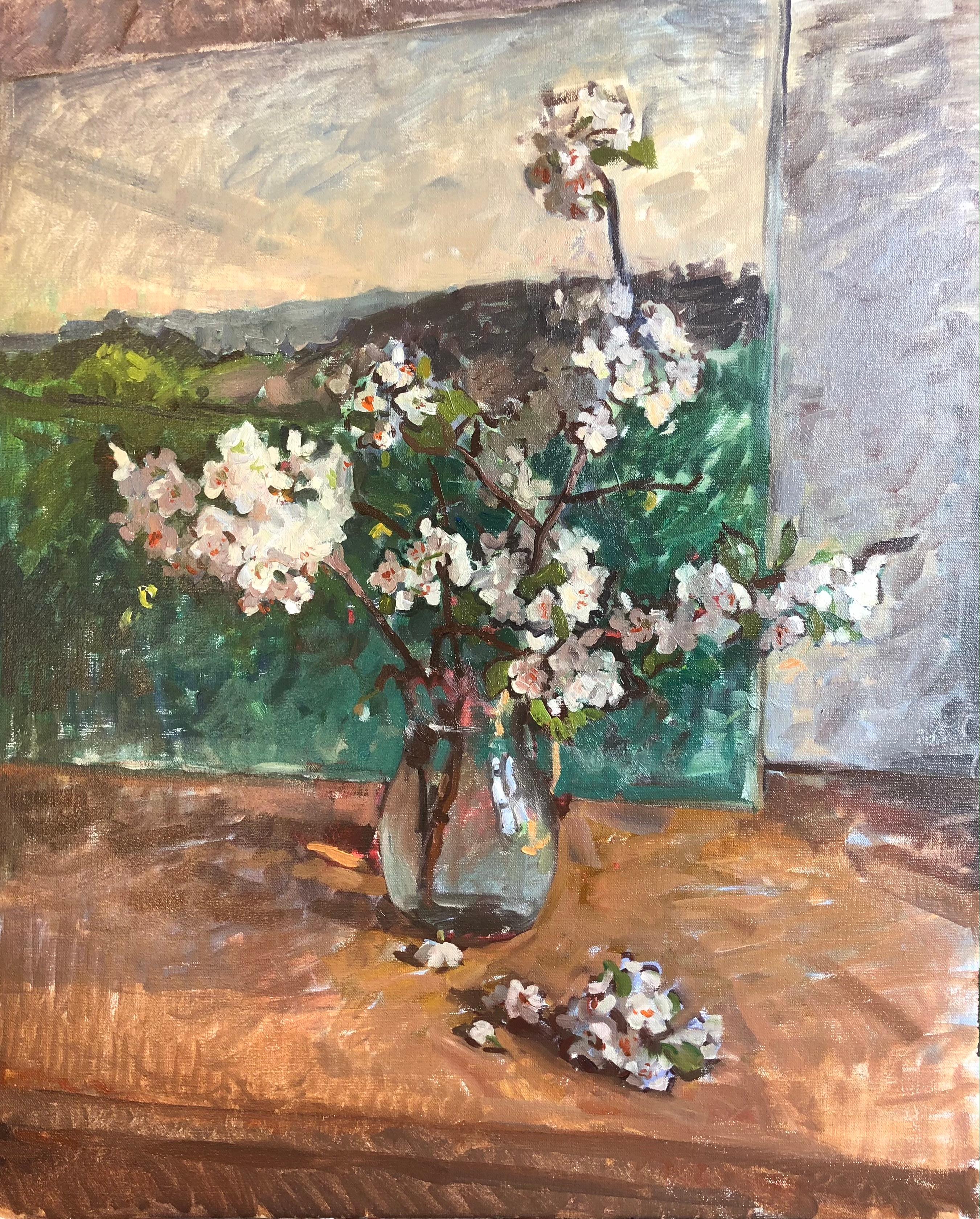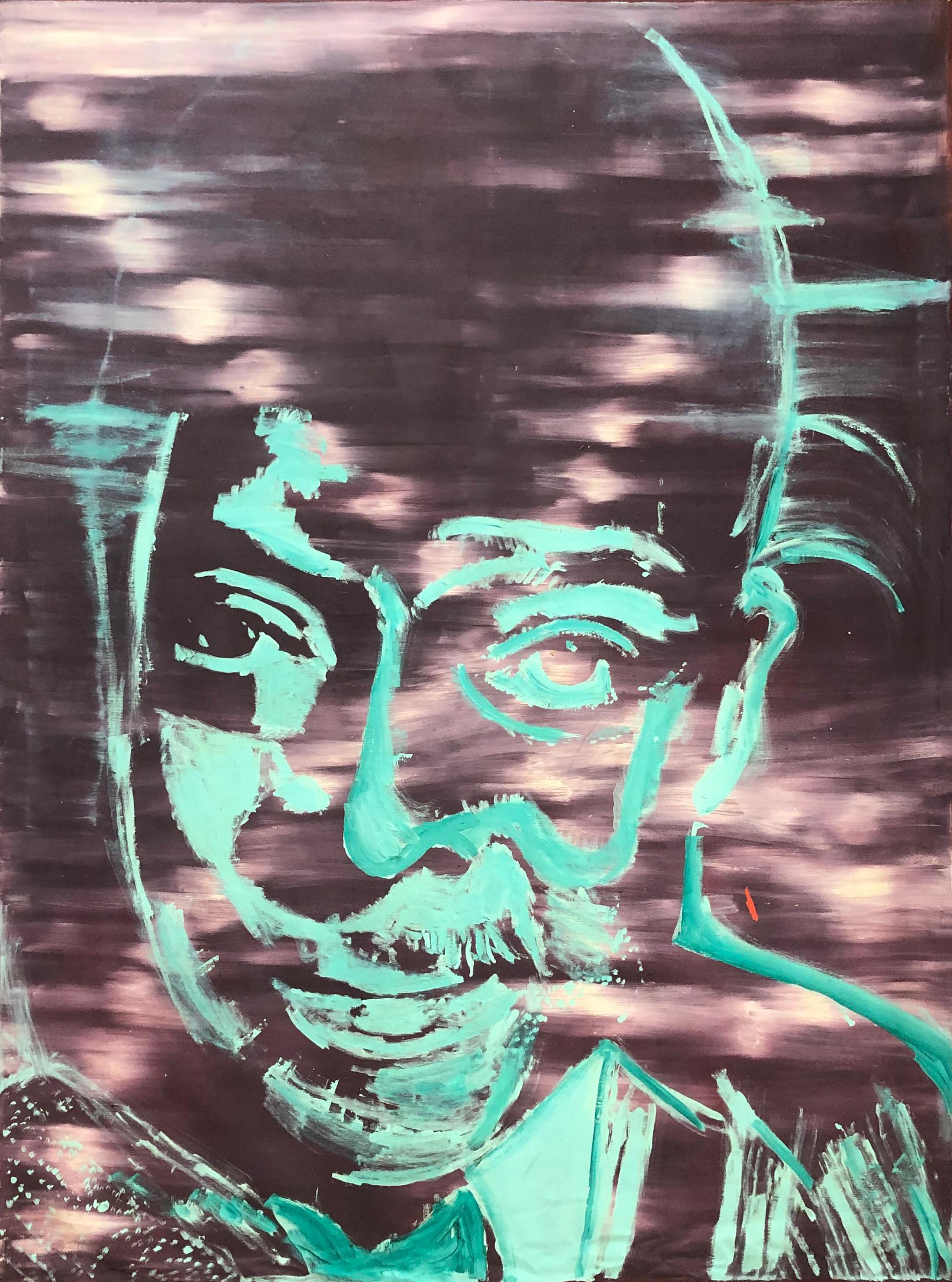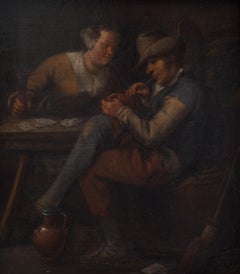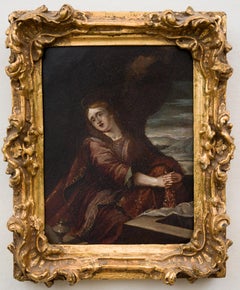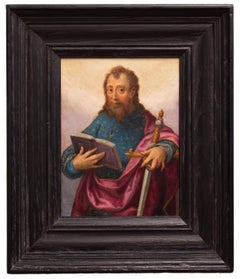
Portrait of a Figure in Armour with a Skeleton Head, Central European School
View Similar Items
Video Loading
Want more images or videos?
Request additional images or videos from the seller
1 of 14
UnknownPortrait of a Figure in Armour with a Skeleton Head, Central European School 1900s
1900s
About the Item
- Creation Year:1900s
- Dimensions:Height: 31.11 in (79 cm)Width: 22.64 in (57.5 cm)
- Medium:
- Movement & Style:
- Period:
- Condition:Unlined canvas, and the paint surface is slightly dirty with a slightly discolored varnish. Craquelure and retouched in some areas. Apparent knocks to the canvas are supported on the reverse with small canvas patches - left of the skull and left leg.
- Gallery Location:Stockholm, SE
- Reference Number:1stDibs: LU144528485322
About the Seller
5.0
Platinum Seller
These expertly vetted sellers are 1stDibs' most experienced sellers and are rated highest by our customers.
Established in 2020
1stDibs seller since 2020
118 sales on 1stDibs
Associations
International Confederation of Art and Antique Dealers' Associations
More From This SellerView All
- The Card Players by a Flemish 1600s ArtistBy Flemish School, 17th CenturyLocated in Stockholm, SEFlemish 1600s School The Card Players oil on oak panel panel dimensions 22.5 x 20 cm frame included Provenance: From a Swedish private collection. Condition: Flat and stabl...Category
17th Century Old Masters Figurative Paintings
MaterialsOak, Oil, Panel
- Flemish School, 17th Century, Mary MagdaleneLocated in Stockholm, SEFlemish School, 17th Century Mary Magdalene oil on copper 17th century plate dimensions 23 x 17 cm frame 27 x 22 cm Restored by professional art conservator 2022. Provenance: ...Category
17th Century Old Masters Figurative Paintings
MaterialsCopper
- St Paul With Sword and Book, Mannerist School, Oil on CopperLocated in Stockholm, SEMannerism, derived from the Italian term "maneria," which simply means "style," was an artistic movement that emerged in the later years of the Italian High Renaissance, around 1520, and extended into the early 17th century. It is often referred to as the "stylish style" due to its emphasis on self-conscious artifice rather than realistic depiction. Historians debate whether Mannerism should be classified as a style, a movement, or a period. In contrast to the harmonious ideals embraced by renowned artists such as Raphael, Michelangelo, and Leonardo da Vinci, Mannerist painters took a step further and created compositions that were almost bizarre. They introduced fresh color schemes, elongated proportions, and exaggerated anatomy of figures, portraying them in convoluted and serpentine poses. These artists skillfully exhibited their techniques and abilities, aiming to evoke a sense of sophisticated elegance. Among the notable Mannerist painters are Jacopo da Pontormo, Bronzino, Lavinia Fontana...Category
17th Century Old Masters Figurative Paintings
MaterialsCopper
$5,700 Sale Price20% OffFree Shipping - Highly Detailed Oil Painting - Old Woman Knitting Attributed to David MoniesLocated in Stockholm, SEEssay: David Monies (1812-1894) was a danish artist, specializing in portrait and genre painting. His father Salomon Monies (1786-1853) was a Jewish busin...Category
1840s Realist Figurative Paintings
MaterialsCanvas, Oil
- Reflections of Contemplation by German Artist Karl Weise, Candle Light GenreLocated in Stockholm, SEThis painting features a young girl sitting on a chair in a dimly lit room, illuminated by the soft glow of an orange-tinted ceiling lamp. This painting captures the essence of the candle-light genre of art, which originated in the 17th century and was popularized by Dutch and Flemish artists. The candle-light paintings were characterized by the use of a single source of light, which was usually a candle, and were often accompanied by the inclusion of reflective surfaces such as mirrors, to create an ambiance of warmth and intimacy. Weise's painting is a beautiful example of this genre, as he uses the same technique of a single source of light to create a sense of depth and realism in the painting. The girl in the painting is dressed in a vibrant red dress and white stockings, and her expression suggests a moment of contemplation. On the table, there is a photo frame, perhaps containing a picture of someone dear to her, and its reflection is visible in the mirror in the background. The piano on the right side of the painting is in shadow, while above it is a portrait painting with a golden frame, which adds to the ambiance of the room. Karl Weise was a renowned painter known for his exceptional use of light and shadow in his paintings, which created a mesmerizing play of light that evoked a sense of depth and realism in his work. His paintings were highly appreciated during his lifetime, and they continue to be admired today for their timeless beauty and artistic merit. In conclusion, Karl Weise's painting is a beautiful example of the candle-light genre of art. The use of a single source of light creates a warm and intimate ambiance, while the shadows add depth and dimension to the painting. The young girl's expression and the inclusion of the photo frame and portrait painting add a sense of storytelling to the painting, making it a truly captivating classic artwork...Category
1910s Realist Interior Paintings
MaterialsOil, Canvas
$3,244 Sale Price20% Off - Cubist Portrait of Gabriele Varese (in Italian uniform), 1919Located in Stockholm, SEDick Beer (b. London 1893 - d. Stockholm 1938) Portrait of Gabriele Varese (in Italian uniform), 1919 oil on canvas mounted on panel 116 x 90 cm stamp signature Exhibited: Solo exhibition, Stockholm, Nov-Dec 1917; The Royal Academy Stockholm 1973; Åmells Konsthandel – En internationell kubist, Stockholm & London 2008 Hälsinglands Museum 2011 Millesgården – Dick Beer – Impressionist & Kubist, 2012 Provenance: Within the family Beer until today Dick Beer was born in 1893 in London as Richard Beer, the youngest of five brothers. His father, John Beer (1853-1906), was a watercolourist who was born in Stockholm and had left Sweden at the age of 17. John Beer instructed his sons in drawing and painting, among other things. A number of sketchbooks bear testimony to the boys’ talent. Dick Beer’s parents died in 1906 and 1907. Barely 15 years old, Beer arrived in Sweden as an orphan. First he lived with relatives and finally he ended up at Reverend Laurell in Västergötland. Dick Beer began his artistic studies at the Althin School of Painting in Stockholm in 1908 and continued at the Royal Academy of Arts in the autumn of 1910, but in September 1912 he broke off his studies and travelled to Paris. He rented a studio and enrolled at the Colarossi and Grande Chaumière academies. In the summer of 1913, Dick Beer travelled to Pont-Aven in Bretagne in order to paint. In September the same year, he held his first solo exhibition in Stockholm which he gave the French title Exposition des tableaux de Bretagne et autour de Paris. The exhibition proved a success. Many of the paintings were executed in a light palette in a style inspired by the impressionists. In 1914, Dick Beer undertook an extensive study trip to Italy, Tunis, Morocco and Spain, which resulted in canvases overflowing with colours and light. When the French army mobilised, he volunteered and was enlisted in the French Foreign Legion. In 1915 Dick Beer sustained severe head injuries in a grenade attack, which resulted in deafness and a nervous condition that would plague him for the rest of his life. Two of his brothers died the following year, fighting for the English army. Dick Beer was hospitalised and convalesced at Château de Rochefort. Here he started painting again, in an impressionist style, a painting dominated by blue and green hues. In 1918, Dick Beer married Ruth Öhrling, a dentist, and their son John was born later in the year. During this time, Beer began experimenting with cubist painting and created several large compositions, including the painting “The Arab Café”. In the years that followed, Dick Beer was based in Paris, where he often moved house. He was instructed by André Lhote, who encouraged his students to work freely in the studio and provided them with individual critique. Beer often travelled to Bretagne or Provence. His artist friends came from all over Europe and included Amedeo Modigliani. Dick Beer exhibited fairly regularly in Paris between 1919 and 1934 and made a name for himself in French artist circles. In the summers, Ruth regularly rented a house in the countryside, often at Lake Mälaren. She kept a large house with many models and friends and there was a lot of painting and discussions. In 1933, the couple divorced but Ruth still loved Dick and continued to support him financially for the rest of his life. Dick Beer also exhibited in Sweden, albeit irregularly due to his failing health. In the 1920s and 1930s, Beer continued to pursue an expressionist painting with intense colours and unexpected perspectives, but eventually he veered towards more naturalistic forms, including a large number of nudes. He also painted several portraits of artists, politicians and writers. In 1938, Dick Beer sojourned in Arles. The budding photographer Christer Strömholm...Category
1910s Cubist Portrait Paintings
MaterialsCanvas, Oil, Panel
You May Also Like
- Young Girl after Sir Thomas Lawrence, Regency portrait paintingLocated in Brecon, PowysCharming work in the Regency style, mid 19th Century after Sir Thomas Lawrence. High quality painting. Old Christie's Stencil to verso. Would grace any home, suitable for contempor...Category
Mid-19th Century Old Masters Portrait Paintings
MaterialsCanvas, Oil
- Grand-Scale Old Master Garland Portrait, 17th Century, Signed & Dated, Rare workLocated in London, GBIndistinctly signed and dated In the first quarter of the 17th century a new form of flower painting was developed in Flemish painting, which, recreated by a large group of artists and workshops, would achieve considerable success throughout the century in much of Europe: the garland of flowers surrounding a central figure. Brueghel de Velurs was the initiator of this type of composition, however, it was his pupil, Daniel Seghers, who was the dominant figure in this specialised production and the creator of a prototype that would serve as a model for the numerous artists who followed in his wake. It seems undeniable that the artist of the present painting had seen the Garlands of Flowers Surrounding a Medallion Depicting the Triumph of Love by Daniel Seghers and Domenico Zampieri (now in the Musée du Louvre in Paris). In our painting, the present floral wreath encircles a carved cartouche within which sits Saint Dorothy of Caesarea and the attribute which often accompanies her in art, a basket of roses. The extremely delicate flowers have been rendered in meticulous detail, so that every species can be identified from exotic tulips to roses, irises and forget-me-nots; this obvious attention to naturalism is inherited from the Flemish manner. Each flower is so precise and refined that they are an individual study in their own right. The still-lifes are from the hand of Jan Anton van den Baren, with the central figures by another accomplished hand. Van den Baren’s arrangement of flowers would have delighted connoisseurs in both Flanders and in Vienna, where the impossibility of their all blooming at the same time of year would have been understood as a further statement of the wonder and beauty of the divine. Van den Baren worked first in Brussels, where he collaborated with Erasmus Quellinus II for the figures in his works, before moving with Archduke Leopold Wilhelm, his patron, to Vienna in 1656, where he instead worked with fellow Flemish émigré painter Nikolaus van Hoy. The iconography relates to an eighth century legend where she was presented a basket of roses by a child. In addition to the brilliance of his handling of still-lifes Van den Baren played an important art historical role as Director of Archduke Leopold Wilhelm’s Picture Gallery in Vienna, then one of the greatest collections in the world and the core of what was to become the present collection of the Kunsthistorisches Museum, Vienna. Van der Baren compiled an inventory of the collection in 1659, and his predecessor as Director of the Archduke’s Picture Gallery (when it was still housed in Flanders), David Teniers, depicted van der Baren (third from right) in his celebrated Archduke Leopold Willem in his gallery at Brussels, conserved at the Kunsthistorisches Museum. It is a shining example of the Flemish Baroque and is a very rare object indeed, considering there are only 14 paintings accepted as authentic works by this artist. We are grateful to Fred Meijer for confirming the attribution to Johannes Antonius van der Baren. A feature of this painting is its outstanding carved and gilded frame with a plethora of flowers and foliage. Titan Fine ArtCategory
17th Century Old Masters Portrait Paintings
MaterialsCanvas, Oil
- Flower Still-life Virgin Trevisani Stanchi Paint Oil on canvas 17/18th CenturyBy Francesco Trevisani (Capodistria 1656 - Rome 1746)Located in Riva del Garda, ITFlower garland with a portrait of the Virgin Francesco Trevisani (Capodistria 1656 - Rome 1746) and Niccolò Stanchi (Rome 1623 - 1690), attributable Oil on canvas 66 x 49 cm. - In f...Category
18th Century Old Masters Still-life Paintings
MaterialsOil
$5,130 Sale Price20% Off - Rhapsody in the TropicsLocated in Bogotá, BogotáFigurative painting that explores the invisible bond that connects us with all other living beings. Against a background of natural shadow earth, a suspended dance that is infinite. ...Category
2010s Contemporary Portrait Paintings
MaterialsCanvas, Oil
- Antique American School 19th Century Memento Mori Human Skull Still Life OilLocated in Buffalo, NYAntique American school memento mori still life oil painting. Oil on board. Framed. Image size, 7L x 7H.Category
1870s Realist Still-life Paintings
MaterialsCanvas, Oil
$1,196 Sale Price20% Off - Antique American School Modernist Tropical Portrait Signed Oil PaintingLocated in Buffalo, NYAntique American school modernist portrait oil painting. Oil on canvas. Signed. Framed. Image size, 20L x 18H.Category
1940s Modern Still-life Paintings
MaterialsOil, Canvas
$1,196 Sale Price20% Off
Recently Viewed
View AllMore Ways To Browse
Central Europe
European Masters Paintings
European School 20th Century
Old Vintage Portrait
Old Vintage Portraits
Old Vintage Prices
Central Europe Painted
Skeleton Art
Vintage Armor
Vintage Armour
Skeleton Painting
22x36 Painting
44 X36 Painting
Skeleton Paint
22x22 Circle Art
Lady Barbara
Antique Baby Portrait
Portrait Of A Man French 18th Century
